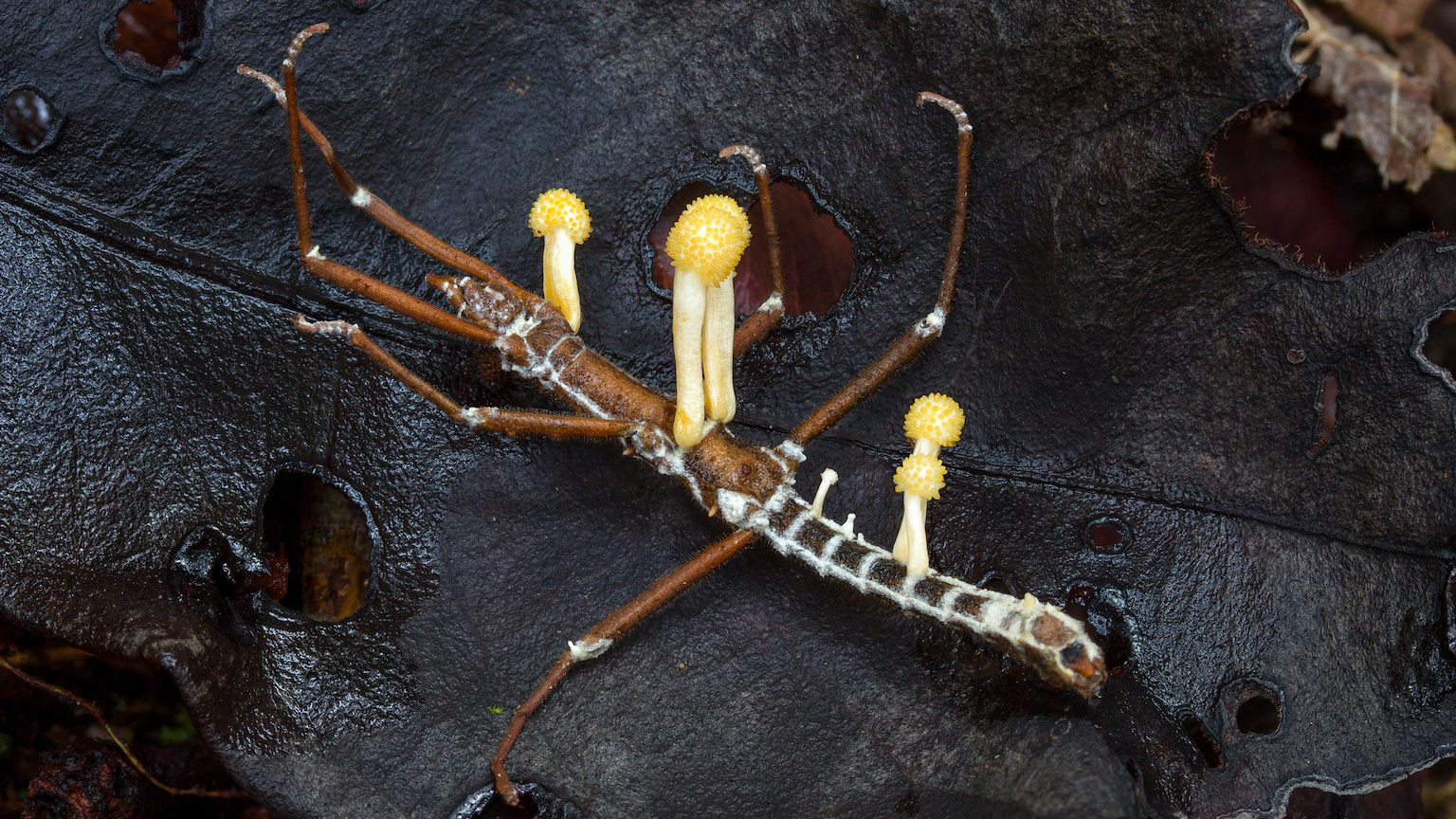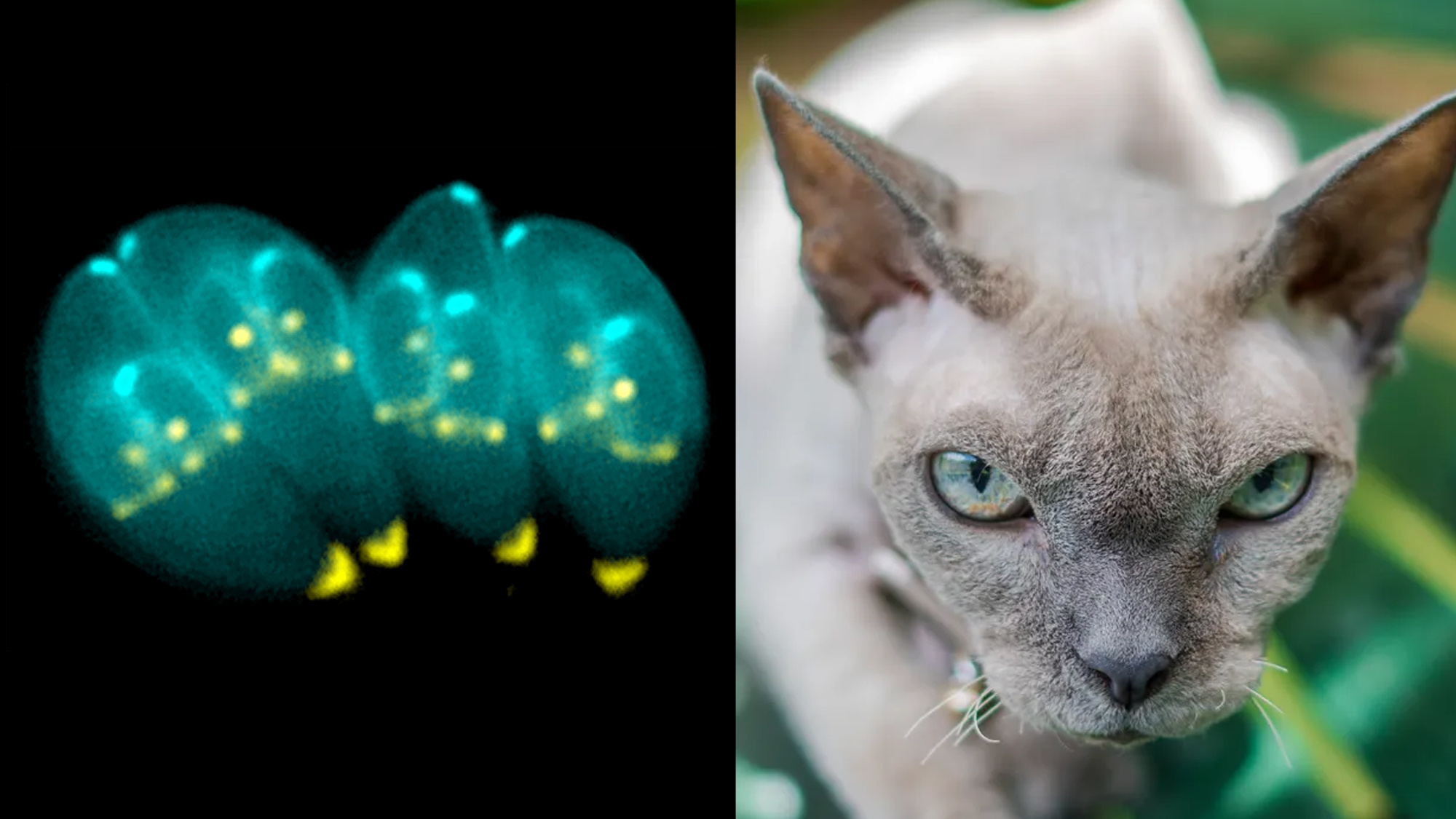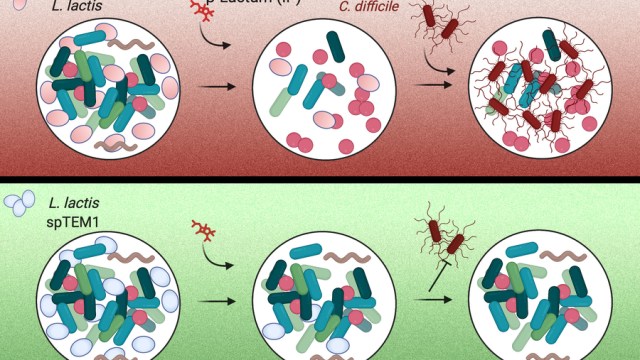Nature’s “zombies”: the disturbing science of neuroparasitology

- Parasites are underappreciated but ubiquitous features of all ecosystems.
- Some parasites can infect their hosts and turn them into veritable zombies. The hosts appear physically unchanged, but their brains and behaviors are under the control of their parasites.
- The new and burgeoning field of neuroparasitology seeks to understand the mechanisms behind this real-life “zombification.”
When you think of any ecosystem, you might first picture its most famous predator — the bengal tiger stalking its prey, or the great white shark lurking the ocean deep. Perhaps you will also conjure up images of the hunted animals — deer, fish, rabbits, mice, insects — and of the plants they eat.
You probably do not picture the parasites that infect the brains of animals, take control of their behavior, and turn them into zombies. These tiny organisms can rewire their hosts to serve the parasite’s ultimate objective: reproduction and transmission.
Yes, you read that correctly — nature has real-life body snatchers. An infected host might look the same, but do not be fooled. It is functionally a zombie, expressing the genome of the parasite and doomed to play out self-destructive behaviors that only benefit its invader.
So if you need inspiration to write Hollywood’s next zombie blockbuster, look no further than the creative, gruesome, and impressive examples of mind control found in nature.
The fungal parasite that gives an ant a death grip
A common strategy in zombifying parasites is to change the behavior of a host to match its own lifecycle. For example, fungi in the genus Ophiocordyceps attach their spores to the cuticle of an ant. The spores germinate and invade the ant’s body, traveling down its trachea. Fungal filaments called mycelia grow within the ant’s body and begin to feed on its organs. At this stage, the young Ophiocordyceps need the host to stay alive and nourish them. So, the mycelia avoid vital organs. (It is unknown how the fungi can distinguish between critical and non-vital organs.)
When Ophiocordyceps wishes to release its spores, the fungus produces a chemical that puts it in charge of the ant’s body. The ant climbs to the top of a plant, clamping its mandibles to stay in place. This is bizarre behavior for an ant. Indeed, the death grip’s only purpose is to help the fungus reproduce. Once the parasite decides it is strong, it has one last, deadly snack: the ant’s brain. The fruiting bodies then sprout from the dead ant’s cuticle and release spore-filled capsules — giving them enough wind and air to spread the spores over the surrounding area and start the lifecycle anew.
The wasp that controls how a spider makes its web
If anybody can empathize with the parasitized ants, it is the spooked spider, Plesiometa argyra. For this spider, the foe is not a fungus but a parasitic wasp, Hymenoepimecis argyraphaga, that uses the spooked spider as its host. When an adult female wasp wants to lay eggs, she uses venom to paralyze a susceptible host. She then attaches an egg to the spider’s abdomen. Once the larva partially emerges, it begins to bore into the spider, where it grows through its various instars, or developmental stages. During the last instar, before becoming an adult, the wasp chemically induces the host spider to spin a cocoon web. This web differs drastically from the standard web spun by the spooked spider. It is like Picasso suddenly saying, “enough with cubism, how about a realistic painting of a church!”
The spider does not weave a random pattern — the web perfectly holds and protects the wasp’s cocoon. The spider then dies, and the wasp larva feeds on the corpse until it forms the cocoon, luxuriates in its new web-bed, and completes its metamorphosis into an adult wasp.
The parasite that steals fear
Zombification does not afflict insects alone. The parasite Toxoplasma gondii primarily infects vertebrates like mice, livestock, and even humans. T. gondii is known to primarily infect rats and mice, who pick up the parasite from cat feces. The parasite hijacks the mouse’s general survival strategy — avoiding cats — and reverses it. The host becomes attracted to the smell of cat urine.
Scientists think the parasite causes this sudden mood swing by disrupting communication in the mouse’s amygdala, the region of the brain that regulates fear. Changing this behavior is T. gondii’s ingenious way of reaching its ultimate host — the cat. Within the cat, it can reproduce sexually, and pass from the colon alongside the feline’s latest helping of Meow Mix.
It gets worse.
These parasite oocysts (a fancy term for “eggs”) can stay alive and ready to infect a host for a long time. That means that if the oocysts contaminate the water supply — which they inevitably will — they can infect birds, cows, and even humans. In fact, researchers estimate that 30-50 percent of the global population is infected with Toxoplasma. Luckily, most healthy people can prevent the parasite from causing serious harm. But these parasites are patient. They can live within the host for years, until the immune system becomes compromised enough for the parasite to reproduce and cause the disease toxoplasmosis, which usually just causes a flu and some muscle aches. In seriously ill patients, the parasites can cause seizures and blurred vision.
Because T. gondii infects the brain, scientists have long suspected it may subtly alter human behavior. Intriguing research has shown a correlation between Toxoplasma infection and self-directed violence, including suicide. Another study even suggests that students with toxoplasmosis are more likely to be interested in business, due to a reported reduction in the fear of failure. However, we need more research on the mental effects of Toxoplasma on humans before we can link this behavior to infection.
These studies, though controversial, have some scientists wondering why Toxoplasma would go through the trouble of changing our behavior. Unlike mice, we are a dead-end host for T. gondii. Some experts believe that any behavioral modifications in humans might be a residual adaptation that evolved in Toxoplasma when humans were, indeed, also chased by cats (bigger cats, of course).
Ecosystem implications
Sure, you may reason, these creatures are frightening. But they probably prey mostly on bugs in some dark corner of rainforest that I will never see.
That might sound comforting. But it’s wrong.
Parasites are found everywhere. In fact, in many habitats, the cumulative effect of parasites far outweighs that of top predators. For example, one study quantified the biomass of free-living and parasitic species in three estuaries in California (hardly a tropical jungle).The researchers found that pound for pound, parasites represent about 3 percent of the total biomass in these ecosystems. They outweigh all of the bird biomass. Although not all these parasites are masters of mind control, many of them probably benefit from a simple truth: A parasite that can alter the behavior of its host to improve its transmission will earn natural selection’s favor.
Additionally, these behavioral effects give the miniscule creatures great influence over other interactions in an ecosystem. Many parasites cause prey organisms to martyr themselves to predators. Infected organisms thus have a much higher chance of dying before they can spread their genes. For example, the flatworm Leucochloridium paradoxum causes its snail host to squirm. Birds already think the snails are delicious, and they notice this movement immediately. Later, when the airborne bird has a bowel movement, the flatworm babies fly, improving their chances of infecting another host.
A burgeoning field of study
Neuroparasitology is an emerging field that studies parasites that control the nervous system of a host. The holy grail for neuroparasitologists is discovering the mechanism that a parasite uses to modify the host’s behavior. The field is in its infancy but has already made significant findings. For example, research has shown that many parasites can change the genetic expression of the host.
Other scientists are characterizing the chemicals in the secretome — the group of secretions involved in host manipulation. Linking chemical composition to mechanism and function is an exciting challenge, and would mark a big step forward in neuroparasitology.
Finally, the questions of neuroparasitology do not stem only from the awe, wonder, and fear that zombification evokes. Rather, understanding how these parasites do what they do comes with significant implications for neuroscience in general. For example, the parasite-host interaction will undoubtedly broaden our understanding of how neurons, hormones, and genes interact to regulate behavior.
Plus, until we understand what is going on, we will not really know whether humans could be the next targets for zombification. Until then, I suggest steering clear of your cat’s litter box.





